Welcome to Budget Deck Breakdown, the series where we highlight decks that are fun to play without breaking the bank. There are a lot of powerful synergies and decks to build from just Common and Rare cards, and this week we're focusing on one of the more well-known ones: Gibberling and cheap spells. That's right, we've sold our souls in exchange for quick wins and explosive turn 1 plays. We're talkin' Tokens and gabbing with Gibberling.
A Perfectly Harmless 1 Mana 1/1
Gibberling has been the perfect 1-Drop for Token Druid decks since its release, a snowballing 1/1 that can fill your board with gibbering creatures ready to hit face and hit it hard. Its built-in synergy with Innervate and Lightning Bloom was immediately seized upon by deck-builders, but beyond the occasional highlight play and Turn 1 high roll, the deck never rose above its Standard compatriots. Having played with a number of Gibberling decks, I can tell you that the deck was prone to running out of resources quickly and was very weak to early board sweepers.
Has any of that changed? Not really, no. However, Darkmoon Races has given the deck a few extra tools for a more explosive early game as well as ways to get back on the board if our opponent wipes us. The deck's pretty fun to play not only because of the ridiculous things you can do with a Turn 1 Gibberling, but also because of some of the other cards we've put in the deck. Let's talk about them.
Key Cards
This might come as a shock, but the main key card in this deck is Gibberling. You may know it from such films as: The 1/1 That Wouldn't Die and The Game That Ended Before Turn Four. Gibberling, paired with a few cheap spells, can explode into a massive board that keeps growing until eventually your opponent is buried in a pile of furry creatures. This deck runs a lot of cheap spells that pair well with Gibberling and Intrepid Initiate ("The other Spellburst 1-Drop!"), but they have a variety of uses outside of big turn 1 plays.
Innervate and Lightning Bloom let us cheat tempo by giving us extra mana to play more minions or apply a huge buff to our minions before our opponent is set up to deal with it.
Adorable Infestation is a cheap way to generate tokens and give a small buff to one of our minions.
Nature Studies finds us more spells while discounting our next spell for additional tempo.
This deck's new power comes from a handful of cards that were added with the Darkmoon Races expansion. Resizing Pouch is great on Gibberling turns to find another cheap spell (playing it with your last remaining Mana will find you another 0-Cost spell). It's also useful late for finding something to play when you have nothing to do with the rest of your Mana.
Arbor Up is a fantastic top end and AoE buff. At its worst, it's 5 Mana for two 4/3 bodies on an empty board, but it is borderline back-breaking to land the buff on a full board (and game-ending if they can attack). Because this deck has a lot of ways to generate multiple bodies before turn 5, we're depending on it to give our early minions the extra punch they need to end the game.
My personal favorite of these new cards is Crabrider. Crabrider does a lot for us: it can Rush in to attack opposing minions the turn it's played and threatens to deal a lot of damage if our opponent doesn't get rid of it. A Crabrider wearing any of our buffs can end the game in a hurry.
Mulligan and Gameplay Tips
Our plethora of cheap spells to pair with an early Gibberling makes it pretty tempting to sell out for Gibberling, but this deck has enough powerful things to on Turn 1 that we don't need to look specifically for it. There is a lot of redundancy in our spells, so we have a lot of flexibility when deciding what to ship back, but it's not a terrible idea to keep a 0-Cost spell with a card like Dreamway Guardians and trust that we can find other things to play with it.
This deck wants to end the game quickly, so there aren't that many differences in mulligans against aggro or control. You're mostly looking for cheap ways to manufacture an early board presence and spells to buff your board. If you're worried about running out of resources against a control opponent, keeping a card like Voracious Reader can be worth it if you already have the pieces for the first couple turns.
Mulligan decisions change slightly when you're going second (and have The Coin). In those cases you should be looking to keep Adorable Infestation or Power of the Wild alongside Gibberling or Intrepid Initiate. The Coin is another cheap spell to pair with one of our Spellburst 1-Drops, and the buff from a card like Power of the Wild is our best bet at overcoming our opponent's advantage of going first.
Playing this deck isn't incredibly complex, but it is a bit more than, "Just play every card in your hand, what's the big deal?" You want to plan out your turns in advance so you know you're getting the maximum amount of value from a card like Lightning Bloom, and save your buffs until your board is as wide as it can get that turn. The flexibility of options from Nature Studies and Resizing Pouch means we have a good shot at finding the right spell at the right time (but keep in mind that the right time is not always "immediately"). If you have a choice between playing a Discover spell and another 1 Mana card, it's often correct to play the other card and save the Discover for when you have more information and more Mana.
Knowing what your opponent's early game looks like is also essential to piloting this deck to wins. If you know your opponent can buff their minions, it might be right to trade instead of going face. Or, you might have to trade to keep one of your stronger minions from dropping below a certain Health threshold and becoming vulnerable to an AoE or damage removal.
If you have the chance to cast an early Arbor Up on a decently wide board (thanks to Innervate or Lightning Bloom), go ahead and do that thing.
Card Replacements for the Rich and Famous
Gibberling Druid is actually pretty budget-friendly no matter how you build the deck because the main goal (build up a board and buff it) is mostly accomplished by low rarity cards. One expensive adjustment I can recommend is to replace the copy of Blessing of the Ancients with an Embiggen for a more cromulent early game buff that makes every minion in your deck much more difficult to deal with. Another change you can make to the deck is adding Speaker Gidra, a more expensive Crabrider who can get very big under the right circumstances.
A slightly spicier change to the deck comes in the shape of Skydiving Instructor, a 3 Mana minion that can pull one of your Spellburst 1-Drops from the deck (like card draw, but better!) to pair with any spells in hand. It's a bit of insurance to give you more ways to fill your board and would be best inserted as a replacement for the Acornbearer and a Wriggling Horror. Lunar Eclipse and Solar Eclipse are fun cards that serve a unique purpose in the right situation, and are certainly worth a go if you want turns that are more explosive but slightly less consistent overall.
If you're worried about your board getting wiped, you can instead replace both copies of Wriggling Horror with Soul of the Forest or you can make the 200 IQ play and replace them with Recurring Villain ("You were expecting Gibberling, but it was ME! A 5 Mana 3/6!")
This isn't the most innovative deck, but on a budget, it does a great job of taking advantage of the token synergies inherent in Druid. If you play your cards right, you can create some very big boards and board swings. If you play your cards wrong, Hearthstone may not be the game for you.
Have you got your own budget decks that you've been playing? Are any of them running Recurring Villain? Share your thoughts in the comments below!


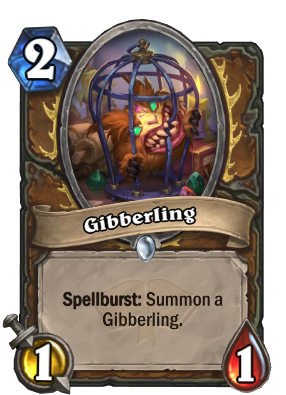
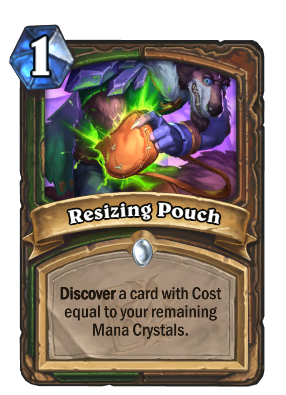
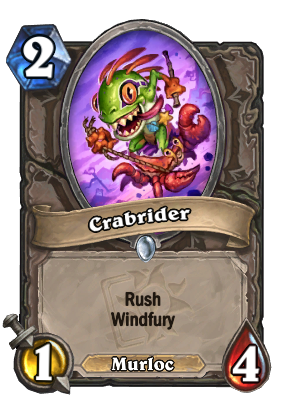
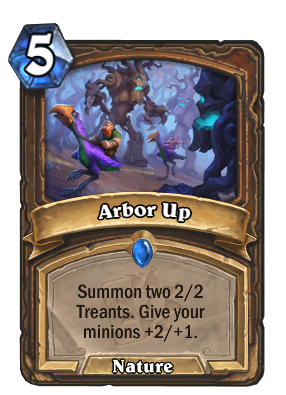
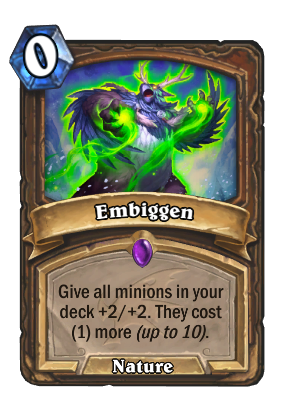
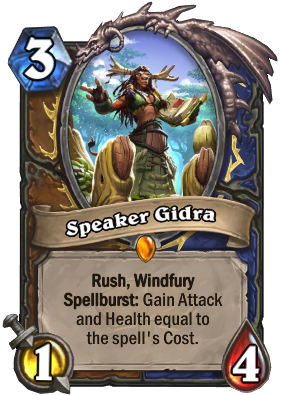
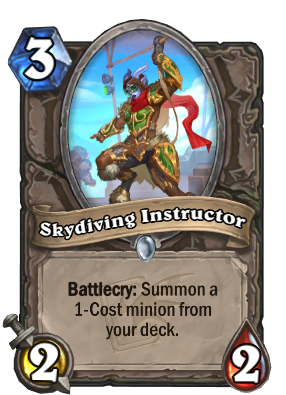
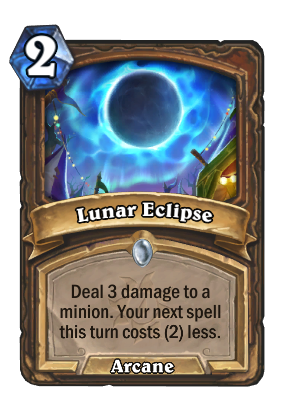
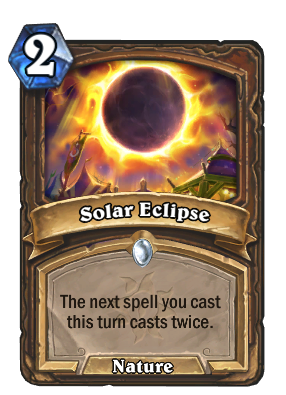
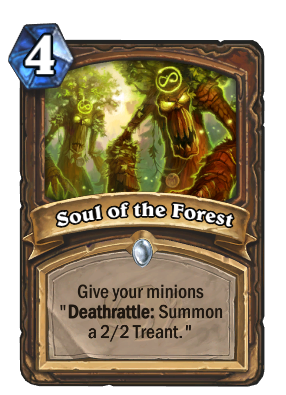
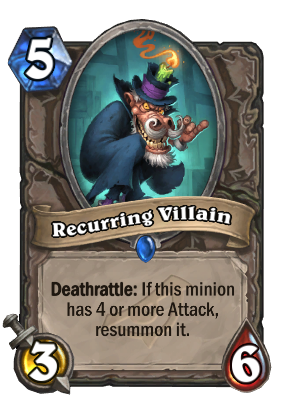






Comments
This deck looks much more promising than the token druid deck off of HSReplay. There's been times where I topdeck Glowfly Swarm with any empty hand and it just feels bad to skip a turn, at that point I'm dead anyway
I was never a fan of token druid. I neither enjoy playing it nor playing against it. It all comes down to:
1. flood the board
2. if the opponent killed your board, repeat step 1
3. buff the board and instantly win the game
It's probably more complicated than I made it out to be, but I just find that playstyle incredibly boring with little decisions to make.
Embiggen. It's a perfectly cromulent word.
I love this. I don't normally like aggro, in fact I down right don't. But for some reason I like this. Great write up!!
Every time I see druid on the top I have to be honest...
I hate it
If its not swarming the board with an instant kill card if you don't clear, its playing cards 4 turns earlier than possible. The only consolation is that when they lose, its usually because they just drew nothing for 3 turns and can't do shit.
Thats fine, everyone has classes they just hate, mines Priest
Same.
I hate priest. The goal of a priest deck is to tilt opponent not win the game.
I'd rather lose to aggro.